Immerse yourself in the rich ' Nanyang' (Straits Chinese) culture...
Many local folks fondly remember this area as 'Niu Che Shui' (Bullock-Cart Water). In the past, no tap-water distribution system was available. Each household had to rely on collecting fresh water from the wells on Ann Siang Hill and Spring Street, using bullock-drawn carts. This cache revolves around the life of an early Chinese settler, Ah Long. Ah Long had come to Singapore from China in the hope of a better life. Read about Ah Long's story below and solve for the unknowns. Cache coordinates are as follows:
N 01 (F)(J) . (E)(D)(G)'
E 103 (H)(C) . (A)(I-B)(K+D)'
'*' in the equation is multiply.
*** The characters in the story below are fictitious. Any similarity to real life is purely coincidental. ***
__________________________________________________________________
The Landing
N 01 17.243', E 103 50.962'
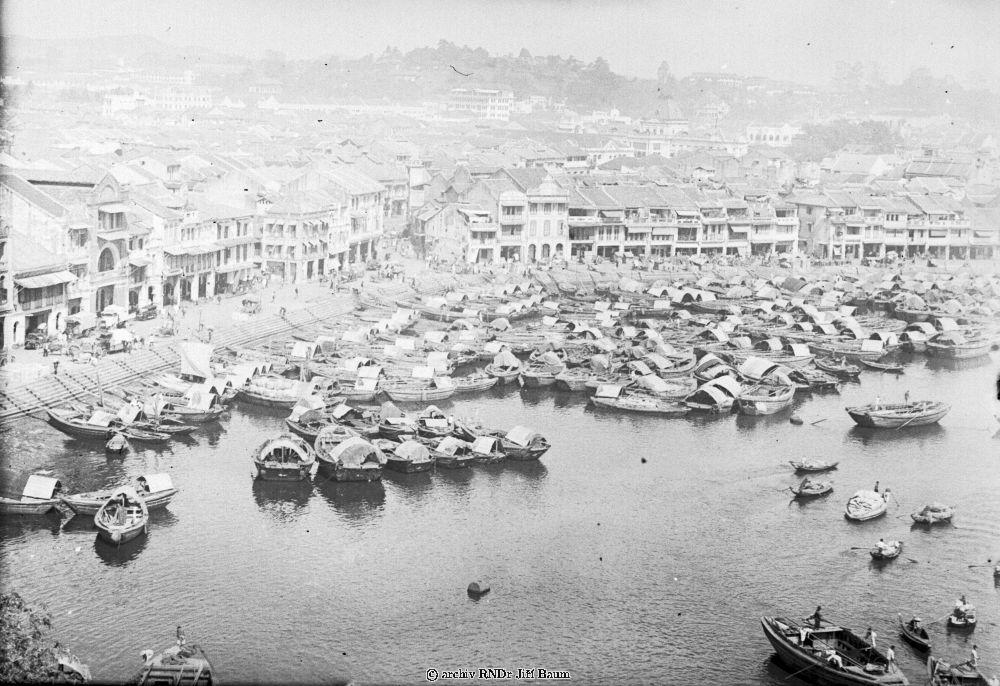
"It was a bright morning when Ah Long first sighted Singapore. At last, he had arrived in 'Nanyang' - the famed Land of Riches. As the bumboat cruised along the river, joy overwhelmed his heart. There were people everywhere - unloading cargo from the junks; negotiating deals over goods; and more. What a difference from the fishing village where he was born! The bumboat drifted to a halt by the riverside, and Ah Long stepped onshore. Solid ground finally, after a long grueling journey to escape from the hardship and famine back home. Thus began a new chapter in Ah Long's life story..."
Start off your trip at Boat Quay, where our forefathers first stepped upon the shores of this land. Storehouses which used to hold the bulk of the sea trade are now converted to trendy restaurants and pubs. At the above coordinates, you will find a standing plaque by the streetlight. Note the caption below the only photo on the plaque. (A) is the fourth digit of the year the photo was taken.
= = = = = = = = = =
A Prayer of Thanks
N 01 16.856', E 103 50.867'
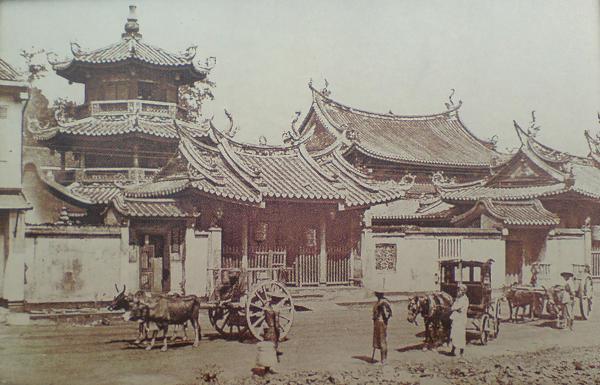
"The voyage had been arduous. Some had perished out at sea, but Ah Long had survived. For this, Ah Long was profoundly grateful that he had been spared and went to offer his thanks to Ma Zu - the Protector of Sojourners. Standing at the temple gate, Ah Long was awed by the majestic splendour in front of him. Inside, sweet incense filled the air and a misty aura shrouded the statues in mystic charm. Clasping the joss sticks between his hands, Ah Long knelt and bowed in respect to the deities, and prayed humbly for the good fortune to last..."
The above coordinates will have you standing outside the Thian Hock Keng Temple. One of the oldest temples in Singapore, this was also the birth place of the biggest local Hokkien clan association. The temple initially started as a shrine to the Chinese deity of Ma Zu or Ma Cho Po, the deity of the sea, who will bless the treacherous journey across the South China Sea. When the early settlers became greater in numbers and in affluence, the temple architecture took shape built from donations from the grateful Chinese immigrants, some of whom became the early pioneers of Singapore. Take a minute to admire the intricate artwork on the walls and rooftop. Count the number of dragons on the rooftop above the main entrance to the site. (B) is equal to that number. Look carefully, it should be more than two. [The temple is undergoing some renovations currently and you may find it difficult to count the number of dragons on the roof. If you search the Google pages, you will see that there are 4 dragons on the rooftop but we hope you will still see the temple as it is a mandatory visit due to its architecture and historical significance.]
You will need the following later:
[Count the number of claws the dragon have on each foot. (Z) = number of claws on each foot. Do you know the significance of this? (A high res digital camera and a pair of steady hands might come in handy for this).]
= = = = = = = = = =
Water from the Wells
N 01° 16.857' E103° 50.797'
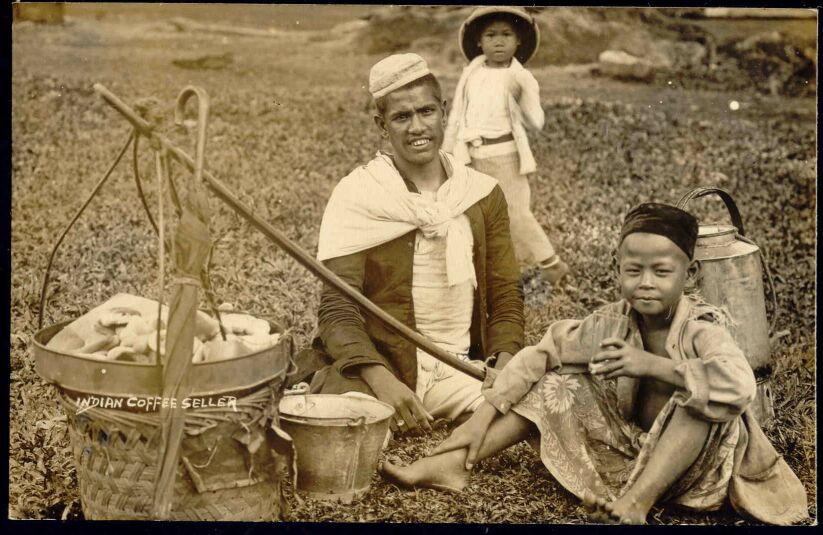
"Ah Long felt hapless. A stranger lost in a faraway land. Standing outside the temple of Ma Zu, he saw strange people in strange clothing and speaking a strange foreign tongue. He wandered along Telok Ayer St and marveled at the beautiful architecture of their places of worship. Who are these people and how do they thrive here? There must be opportunities abound! How could he earn a living? Where would he stay? People surrounded him, but none that he felt he could truly count on for help.

As he wandered into Amoy St he saw bullock carts carrying water collected from a well. Some people were also carrying water in wooden buckets to deliver. One of the men seemed to be struggling and in pain. He pleaded with Ah Long to help him finish the deliveries for the day in return for a shared meal with him. Ah Long found himself agreeing to the deal. He had been hungry for many days and he better learn about this strange land quickly.”
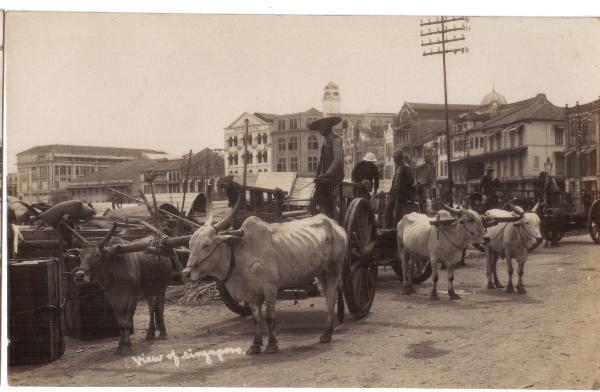
The above coordinates will lead you to the foot of Ann Siang Hill where a well is still preserved to this day. The wells in Ann Siang Hill and in Spring St were the only source of fresh water to the thriving community of immigrants. Ann Siang Hill was formerly known as Scots Hill after a British plantation owner, Charles Scot who owned the area. It used to be a clove and nutmeg plantation but for some reason the crops were devastated after a blight infection. The hill was then sold to a wealthy Chinese merchant, Chia Ann Siang, who turned the hill and the area into a Chinese enclave. There were many wells in the area in those days but by the 1920s, overcrowding (due to massive immigrant inflows) became a chronic problem and the water from the wells was often contaminated (due to poor sanitation and planning) and insustainable for the masses. In front of this preserved well is an information board describing the area. How many wells were there in urban Singapore in a 1900s survey? (C) is the fourth digit of this number.
[ATTENTION: The board is gone please use C=0]
You will need the following later:
[Count the number of languages on the information board describing the area. (Y) equals that number. Alternatively, please retrieve a micro from under the information board in front of the well bearing the value for (Y).]Attention: Signboard is missing, please use Y=3.
= = = = = = = = = =
Clansmen Loyalty
N01° 16.852' E103° 50.749'
"Dinner was a frugal affair with the staple of rice and some vegetables. Ah Long learned that his new found friend was in ill health. He was filled with both pity and apprehension for his own fate. His new friend was sympathetic and advised him to seek out the clans. They would be in the best position to help Ah Long. There was one representing his home village nearby in Ann Siang Rd. . That was also a place where Ah Long could possibly find food and lodging in the midst of searching for a job..."
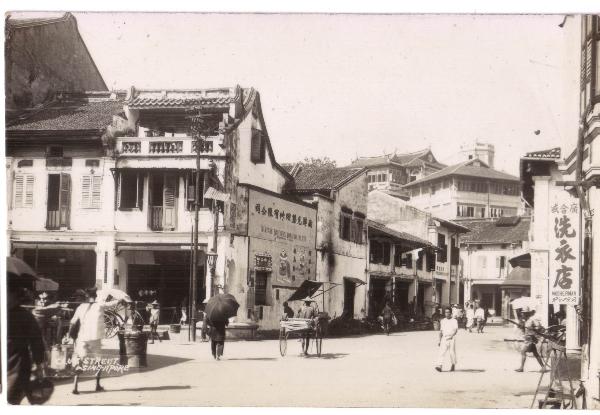
The above location will have you standing in front of an old Chinese clan association with cream coloured painted bricks on the outer facade. The top of the building has a flag pole and just underneath that is a shield crest representing the association crest. The clans are associations of people with the same surname, same dialect, same job or hobby. This particular one houses the 134 year old Kwong Wai Siew Lee Clan Association (current year of writing is 2008). Clan associations play a very important part in the early days of nationhood when immigrants from China and India were settling into Singapore. They function as a resource centre to help new immigrants adjust and survive in Singapore and yet at the same time provide a functional conduit for immigrants to keep updated on news affecting their former homeland. This building is probably from the 60’s. Within, if you are lucky to be granted entry, you can still see that old ways do not seem to have disappeared. Chalk boards are still used and on the walls are the pictures and accolades of the early pioneers. At the centre is a small courtyard with an airwell. Count the number of circles on the shield below the flag pole on top of the building. This number equals (D).
You will need the following later:
[Please count the total number of Chinese characters in the two rows (big and small - mounted individually on the wall and not on any signboard) occupying the outer facade of the building. This number equals (X). ]
= = = = = = = = = =
Jinricksha Station
N 01 16.827', E 103 50.635'
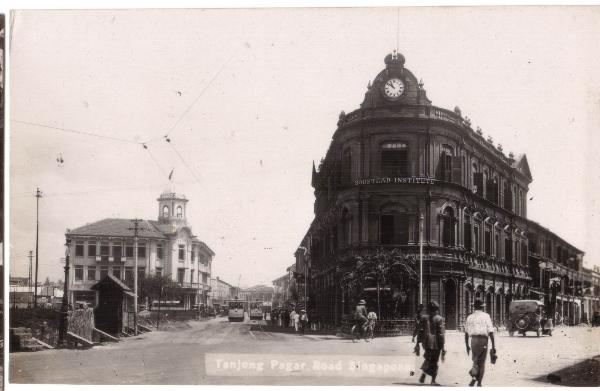
"It must be a stroke of luck that Ah Long met his childhood friend, Ah Wang at the Clan Association. Wang had left the village three seasons earlier to come to Nanyang. Understanding Ah Long's plight, Ah Wang brought Ah Long to the Jinricksha Station. Ah Long's good physique was ideal for rickshaw pulling. Eager to earn his first dollar, Ah Long signed a money bond and rented a brand new rickshaw from the local boss. Tugging his prized possession behind, a jubilant Ah Long began forging his livelihood on this distant land..."
The rickshaw was introduced to Singapore in the 1880s from Japan. It soon gained popularity as a means of transport. Demand was so high that by 1919, there were 9,000 rickshaws manned by 20,000 rickshaw pullers working in shifts. Fares were meager, though the work was tough. Study the signboard on the wall of the building. For three cents, a passenger in a rickshaw can afford to travel up to 0 . ( E) kilometres. Alternately, he can also rent the rickshaw at twenty cents for one hour of use.
You will need the following later:
[Look carefully at the picture on the information board depicting the area back then. (W) equals the number of rickshaw(s) being pulled moving away from the photographer. Alternatively, at the lower left gap between the board and the wall, carefully retrieve a micro with the value of (W). Remember to stealthily replace it. ]
= = = = = = = = = =
A Place to Call Home
N01° 16.760' E103° 50.595'
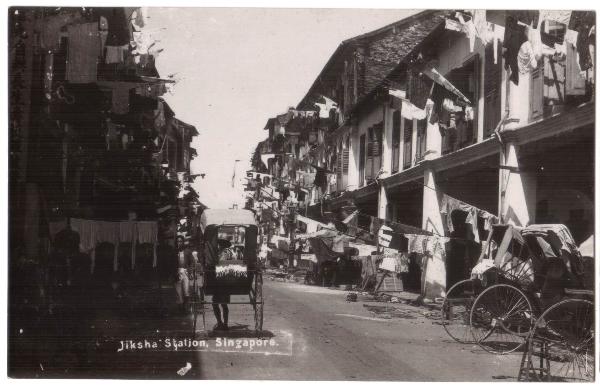
"Ah Wang offered Ah Long to stay with him and his rickshaw brothers at Jinricksha Place - just behind the Jinricksha Station. Ah Long was warned not to mix around with the other competing rickshaw gangs since once you are part of a group, you never venture long into another group’s turf. Just one week ago, there was a huge brawl among the rickshaw gangs and an uneasy truce had been brokered by the Hui Ann Association - the association that oversee the welfare of the rickshaw pullers. The living quarters were shared with many rickshaw pullers in cramped spaces. Bed was a centre cubicle in a 3-tier section of the row of cubicles along the wall. Nevertheless Ah Long was just relieved that he had a place to stay and a livelihood to support himself in a new world”.
Jinricksha Place was what is now called Duxton Rd. Standing at the above coordinates are rows of neatly conserved shophouses. Duxton Rd and Duxton Hill was originally a nutmeg plantation owned by Dr William J Montgomerie, an Assistant Surgeon in the British colonial government. It was later sold to Syed Abdullah Omar Aljunied, a wealthy Arab trader who in turn sold or leased parcels of the area to wealthy Chinese developers. Due to the close proximity to Jiricksha station, Duxton Rd was developed into a place where rickshaw pullers rented their living space and parked their rickshaws. Overcrowding was an immense problem in those days and many fell ill due to close proximity. TB was an endemic scourge. Look closely at the type of businesses operating in Duxton Rd today. In those days, Jinriksha Place was the infamous entertainment capital and home to Chinese Opium and gambling dens as well as cheap brothels serving the community of rickshaw pullers and coolies living in the area. Many writers refer to the area as a notorious slum rife with vice. Chinese triads operate along clan lines and rickshaw pullers sucked into the triads were very territorial. Fights were commonplace and the patriarchal Hui Ann Association was often asked to be the mediator. Go back to Duxton Road - is this a ONE way or TWO way road? This number is (F).

N01° 16.728 E103° 50.568
You are standing at the entrance to Duxton Hill Pedestrial Mall (now converted into a pedestrian mall) which will lead you to Craig Place, Craig Road and Tanjong Pagar Road. Despite the notoriety of Duxton Rd, wealthy Chinese families made their home just next door - in Duxton Hill. Look out for three storey shophouses with garish bold colours (green for example) in the Chinese baroque style. A different look and feel altogether for the affluent. Check out the classy and stylish eateries, architecture and legal establishments in Duxton Hill. The British elements in the architecture are still palpable today. Nevertheless, rich or poor, the area in Duxton was a place to call “home” for many immigrants.
You will need the following later:
[At this coordinates look for the corner establishment with an outdoor timber deck. How many tree(s) do you see jutting out from the floor of the timber deck? (V) is equal to this number. ATTENTION: It seems the tree is gone please use V=2]
= = = = = = = = = =
Of Dreams Beyond Hope
N 01 16.893', E 103 50.729'
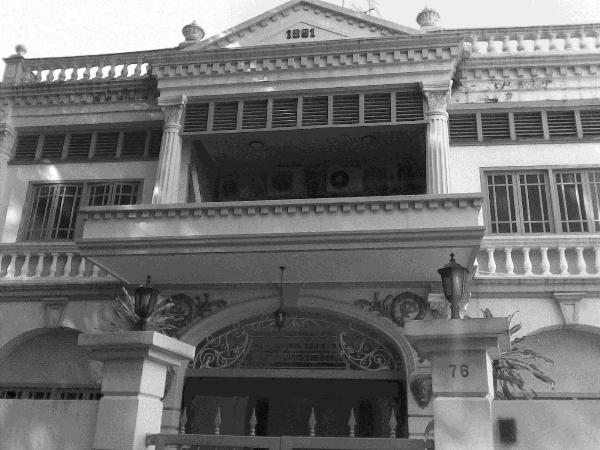
"Ah Long did not understand why. For several years, he had worked hard day and night. No matter how much he scrimped and saved, Ah Long could never earn enough to settle his debt. Whenever Ah Long travels along Ann Siang Hill, he would take a chance to glance into the grand social clubs at the side. In the well-adorned halls, wealthy businessmen could be seen in the company of beautiful ladies, relishing the delight of a warm, fragrant tea. What luxury! It seemed so much an unimaginable dream, one Ah Long was never destined to fulfill..."
After acquiring the area from Charles Scot, Chia Ann Siang developed it into a Chinese enclave of shophouses of an architectural mélange, characterized by the Malay cowboy-style swing doors, Georgian windows and vibrant Chinese colours. Look for the plaque on the wall with a photo on it. Two prominent social clubs once existed in the locality. One was the Chinese Weekly Entertainment Club. The building for this club is still in existence just around the corner at the end of Club St. There is the name of a second club on the board. Sum up the letters in the name of the second club (first three words). (G) is equal to that number.
You will need the following later:
[Locate the fire hydrant with a three digit number in white nearby. (U) is the third digit. Alternatively, just in front of the plaque, locate the information board with the location map of Ann Siang Hill. Retrieve a micro from the bottom right of the of the timber frame of the board bearing the information for (U) .]
= = = = = = = = = =
Lure of the Red Lantern
N 01 16.910', E 103 50.695'
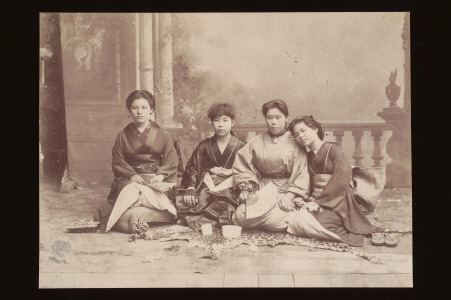
"The God of Fortune had been kind on Ah Long. He was able to clear his debt. With the remaining money, Ah Long bought an apprenticeship at a wooden clog maker shop. Conditions were better, but Ah Long felt lonely. At times, the lure of the flesh would be too much to bear, and Ah Long would patronize the Red Lantern brothel along Smith Street. Most of the prostitutes were Chinese, but Ah Long only asked for a Japanese, whom he affectionately called 'Ah Xiu'. Ah Xiu was different. While the others were loud and bold, Ah Xiu was warm and genuine - a real person - while he was with her. Her delicate features melted the hearts of many. Ah Long yearned for the day to possess Ah Xiu as solely his own..."

Many brothels had sprung up in the heydays to cater to the needs of the predominantly male Chinese community. The prostitutes led a hard life working long hours, were paid little and were treated harshly. Japanese prostitutes were common in those days as Singapore was home to a thriving Japanese community before the war. Find the standing concrete tablet at the entrance to Smith Street. Learn which brothel was the most notorious back then. The brothel keeper was a certain Loh Sai Soh. The number of this particular brothel is a two digit number. The second digit of this number is equal to (H).
You will need the following later:
[Just next to the information tablet is the road sign in brown with the words “Chinatown Food Street”. Just below the English words are the Chinese characters and just below that are the Malay words. Count the number of letters in the first Malay word. (T) equals this number.]
= = = = = = = = = =
An Opium Addiction
N 01 16.961', E 103 50.728'

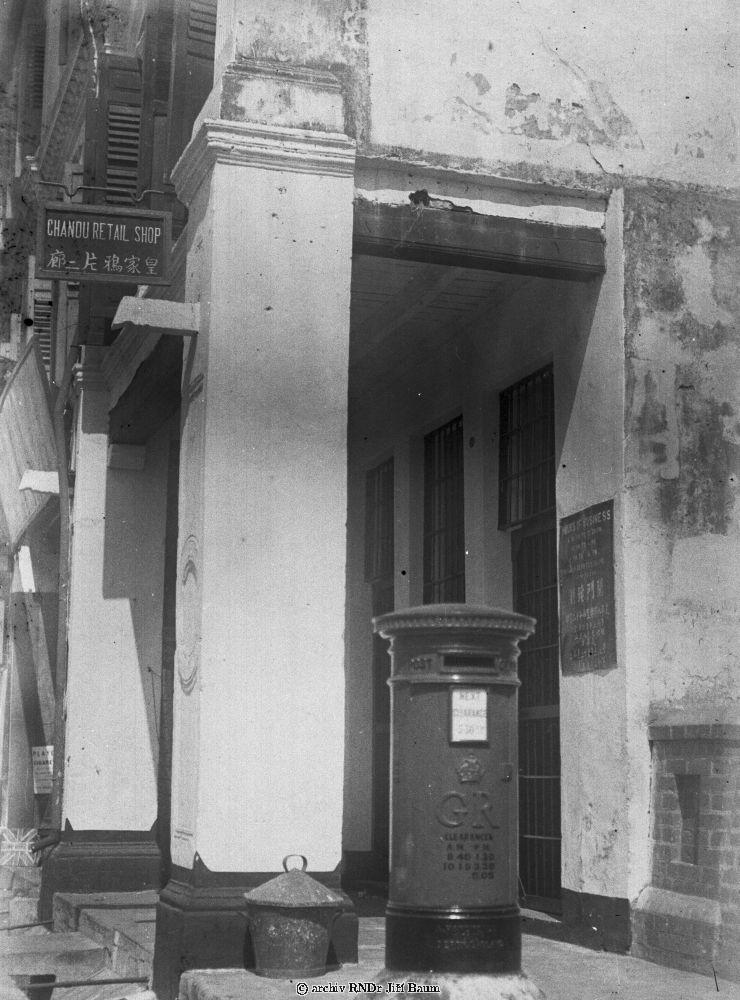
"Alas, Ah Xiu was fated to be short-lived. She was found brutally raped and murdered in an alley one night. Her death came as a shock to Ah Long, whom had likened her to his lover. For days on end, Ah Long lost interest in his job and was constantly in depression. To escape from the grief, Ah Long gave in to opium. Much of his wages was spent in the opium dens along Pagoda Street . What started out as a curious puff of the 'Heavenly' smoke turned into a life-long addiction which he could not overcome..."
The opium dens were a favourite haunt of coolies - manual labourers - who ferried cargo between the junks and the storehouses at the quayside. Opium gave them the relief from their back-breaking work, and a temporal escape from misery. Search for the informative plaque on the exterior wall of Sri Mariamman Temple at the above coordinates. A certain coolie house is mentioned inside. Sum up the letters in the name (three words) and you will have (I) - a two digit number.
You will need the following later:
[ Look for a two digit number in white on the lamp post just under the no entry sign next to the information plaque. (S) is the sum of the two digits. Alternatively retrieve a magnetic micro for the value of (S) . Just in front of the information plaque is the Visitor Security Booth. Locate the air-conditioner drainage tray for the booth and retrieve a magnetic strip from the side of the tray facing the information booth. ]
= = = = = = = = = =
Operation Sook Ching
N 01 17.016', E 103 50.758'

"The years entered a turbulent era. Chaos reigned as the Japanese undertook their sudden and simultaneous invasion of South-East Asia even as the bombs were being dropped in Pearl Harbour. The British surrendered after a futile fight. It was the worst defeat of the British military in modern history even though the Japanese were massively outnumbered. The “Gibraltar of the East” fell in 7 days and the Japanese Occupation of Singapore began. The Japanese were infuriated by the Straits Chinese efforts in supporting the Sino-Japanese War in China. On 18th February 1942, Operation Sook Ching was initiated to weed out all anti-Japanese elements. Ah Long was rudely aroused from his sleep very early on a gloomy Wednesday morning and ordered to report to a temporary Sook Ching centre close by. The air was stiff with dread and silence...."
Operation Sook Ching (meaning ‘purification by purging') was a plan hatched by the Kempeitai (the dreaded Japanese Secret Police) to identify anti-Japanese elements within the local community and to systematically exterminate them. Thousands of Chinese men between 18 and 50 years old were ordered to report to Sook Ching screening centres where they would be picked out by masked informants. Many thousands were transported away by the truckloads never to be seen again. At the corner of this junction where currently a building with rounded arches stands, the Kempeitai set up a Sook Ching screening centre. Look at the picture of one of these centres above and imagine the scene in front of you in this particular corner on that fateful Wednesday morning on Feb 18 1942 - just three days after Chinese New Year on Sunday Feb 15 1942.
The above coordinates will have you standing at the cross junction of South Bridge Rd and Upper Cross St. directly opposite the Hong Lim Complex (the building with big round arches). Locate the lamp post nearest to the corner traffic light cluster. There are two numbers in red followed by the letter "F" on this lamp post. The second number below the first one equals (J). **This lamppost has been changed time and again. At the last inspection, the numbers on the lamp post were "46F". If it changes again, please let us know.**
You will need the following later:
[ Locate a circular brass marker embedded on the building pillar closest to the traffic lights cluster. There are four numbers on this marker. The sum of these four numbers gives (R), a two digit number. EDIT: The circular brass marker is now put back in place despite the heavy ongoing construction. If it goes missing again, please contact us. ALAS, the brass marker is missing again (thanks, Heiko). The two digit number you need for R is 10. I wonder why...it's just a brass marker! ]
= = = = = = = = = =
The Last Days
N 01 16.891', E 103 50.684'
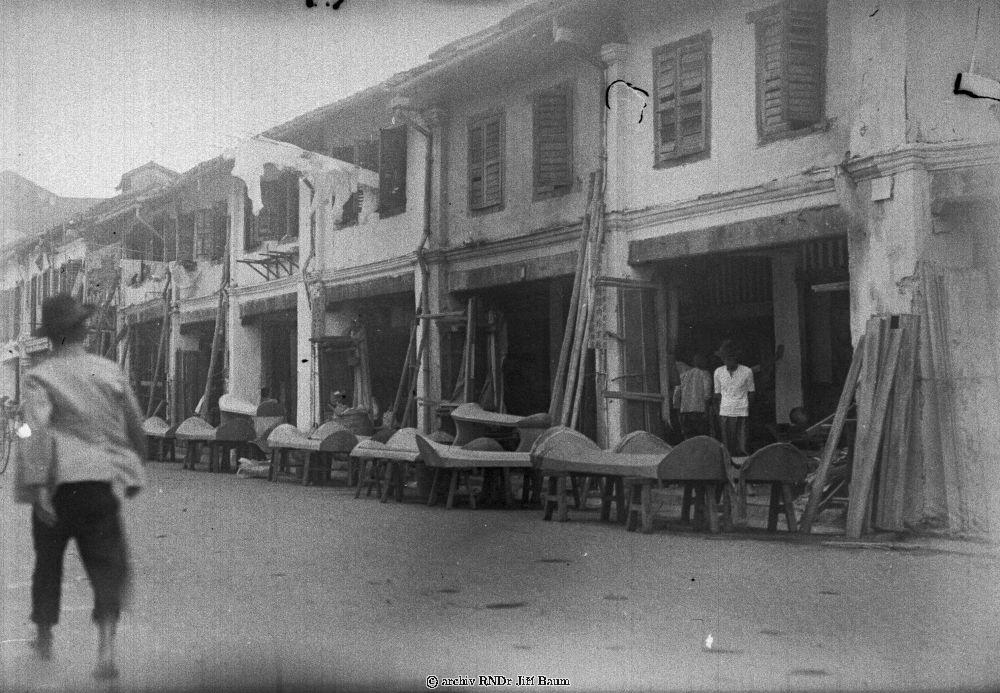
"Ah Long narrowly escaped death but he was clearly traumatized by the extreme torture and executions and his sleep was constantly interrupted by violent nightmares of the electric shocks he had to endure. He lost the will to fight, spending his hard-earned money on gambling and feeding his opium addiction hoping for a quick end to his existence. His wish seemed to be granted quickly as his health plummeted and he landed himself in deep gambling debts. In his final days, penniless and not a worth to his name, a terminally-ill Ah Long crawled into one of the death houses along Sago Street. Lying on the bed, Ah Long recalled flashes of his aged mother and Ah Xiu, beckoning him to come to their embrace. With a deep sigh of regret, Ah Long closed his eyes...and breathed his last."
Many Chinese immigrants lived in close quarters to one another. It is believed that if one dies in the house, the other residents would suffer ill fortune. As such, death houses provided an alternative venue for the poor to die in. Seek out the concrete tablet at the entrance to Sago Street. There is a photo depicting conditions in a funeral parlour. Note the year stated in the last paragraph of the English description. The fourth digit of that year is equal to (K).
You will need the following later:
[ Look at the picture on the information plaque carefully. Count the number of person(s) (those who are still alive!) in that picture. (Q) equals this number. ]
===============================================================================
Much of the work and the inspiration for this cache is from the very excellent original work of Metrohomme's The Story of a Migrant (GCT7EQ). This cache is about finding our roots and the culture and stories behind the real life places. If you have about two hours to spare we are sure you will have an enjoyable walk while learning about the time when nationhood was an abstract ideal.
Cache is a small container. Stealth is an absolute necessity in order that this cache survives in a muggly environment.
Terrain is a difficulty rating of 3 because of the extensive walking that you will do. You will see more and experience more if you walk. It is difficult to do this cache driving.
The hash total for all the variables from A to K is 56.
The hash total for the variables from Q to Z is 47.
You will need all the values for Q to Z if you want to attempt the second part of this series GC1H0TX "The Story of a Migrant": 18th February.
Happy Edu-Caching!
===============================================================================